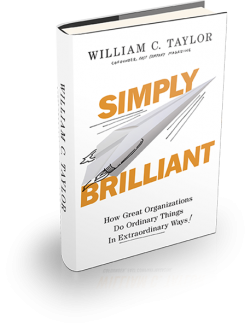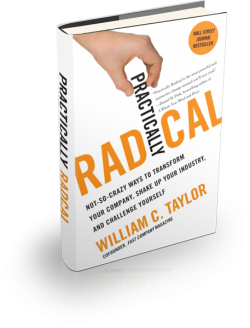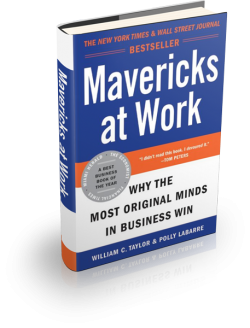These are trying times for optimists. Covid deaths remain tragically high. Job growth remains stubbornly low. So many of our colleagues and kids are feeling stressed, exhausted, angry — “hitting the pandemic wall.” No wonder a recent front-page article in the Wall Street Journal, which has chronicled the Covid-driven struggles of companies and universities, highlighted a crisis at a different kind of organization — Optimist International, a 110-year-old club with chapters around the world. Membership is now at 60,000, down from a high of 190,000, although club leaders remain true to their guiding spirit. “When you hit rock bottom, the only direction you can go is up,” said one chapter head, who declared she was “getting my optimistic groove back.”
HBR: The Leadership and Artistry of Tony Hsieh
Tony Hsieh, the former CEO of Zappos and a legendary internet entrepreneur and management thinker, has died at age 46. His passing has inspired an outpouring of affection and remembrances, and there is an understandable rush to evaluate the impact of his leadership. But to do so for Tony requires thinking about him as an artist and not just a long-serving CEO, as someone driven by big ideas, experimentation, and grand passions rather than just business plans and stock-price targets. As with so many artists, the things that made Tony so easy to admire were brilliant and messy at the same time, which is what makes his legacy so rich and his lessons so valuable.
HBR: To Solve Big Problems, Look for Small Wins
It is tempting, during a crisis as severe as the Covid-19 pandemic, for leaders to respond to big problems with bold moves — a radical strategy to reinvent a struggling business, a long-term shift to virtual teams and long-distance collaboration. Indeed, so much of the expert commentary on Covid-19 argues, as did a recent white paper from McKinsey & Company, that we are on the brink of a “next normal” that will “witness a dramatic restructuring of the economic and social order in which business and society have traditionally operated.”
HBR: How Bad Times Bring Out the Best in People
It’s easy to look around and see how the Covid-19 crisis has brought out the worst in some people — from hoarding thousands of bottles of hand sanitizer to crowding bars and restaurants despite public-health guidelines. But such irresponsible behavior, I believe, is more the exception than the rule. Time and again, individuals and communities have demonstrated that the worst situations tend to bring out the best in people and the organizations to which they belong. In every moment of darkness, it seems, there are countless moments of light — small gestures of compassion and connection that allow people to show who they are, how they want to live, and what matters to them.
HBR: Don’t Let Negativity Sink Your Organization
Every so often, you encounter academic research that snaps into place a whole bunch of tensions, issues, and problems that you’ve noticed but haven’t been able to understand. That happened to me when I read a new book called The Power of Bad: How the Negativity Effect Rules Us and How We Can Rule It. The authors of the book, renowned research psychologist Roy F. Baumeister and award-winning journalist John Tierney, offer lessons from social science about life, love, parenting, even politics.
HBR: Great Leaders Understand Why Small Gestures Matter
I travel a lot of for business, and like most frequent flyers, I dread connecting flights. Except, that is, when those connections take me through Denver or Charlotte, where the prospect of an hour between planes brings a smile to my face and a spring to my step. Why the good cheer? Because I know I’ll be able to spend time with the men and women of Executive Shine, one of the most soulful (or is it soleful?) businesses I’ve ever encountered.
HBR: To Build a Strong Culture, Create Rules That Are Unique to Your Company
Ben Horowitz, the high-profile venture capitalist behind some of Silicon Valley’s fastest-growing startups, is out with an intriguing book, called What You Do Is Who You Are, that emphasizes the power of culture, rather than technology or money, as a driver of business success. One of his most intriguing insights is that powerful cultures are built around what he calls “shocking rules” — rituals and practices that are memorable, so “bizarre,” that people inside the organization “encounter almost daily” and that people who hear about them wonder why they are necessary.
Horowitz’s argument is as simple as it is powerful: You can’t create something unique and compelling in the marketplace unless you first create something unique and compelling in the workplace. Truly great organizations work as distinctively as they hope to compete.
HBR: Do You Give Employees a Reason to Feel Proud of What They Do?
I recently visited Wake Forest University, in Winston-Salem, North Carolina, where I serve on the College Board of Visitors. The campus was buzzing — in part because the weather was so nice, in part because the football team had cracked the national Top 25. But much of the warm feeling was the afterglow of a recently completed, larger-than-life dance extravaganza starring the school’s facilities-and-maintenance staff.
You read that right. For three nights, nearly 70 custodians, landscapers, electricians, and construction crews performed in the school’s main Quad, where thousands of students, faculty, alumni, and neighbors roared their approval.
HBR: To Come Up with Better Ideas, Practice Paying Attention
We live in a world where virtually every business is an “ideas” business. Executives and entrepreneurs are desperate for insights that allow them to amaze customers, reimagine products, and otherwise separate themselves from the crowd. But it’s hard to see new things if you don’t know how to pay attention, how to cut through the endless meetings, messages, and emails, how to really listen to and begin to decode what’s happening in the world that truly matters to your organization.


